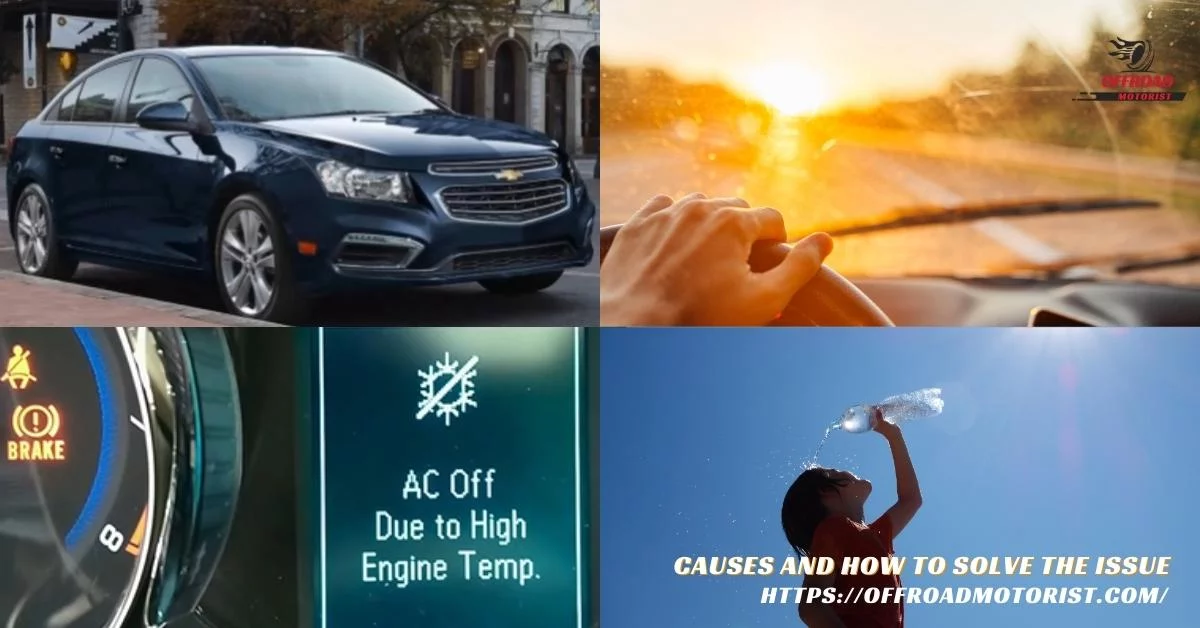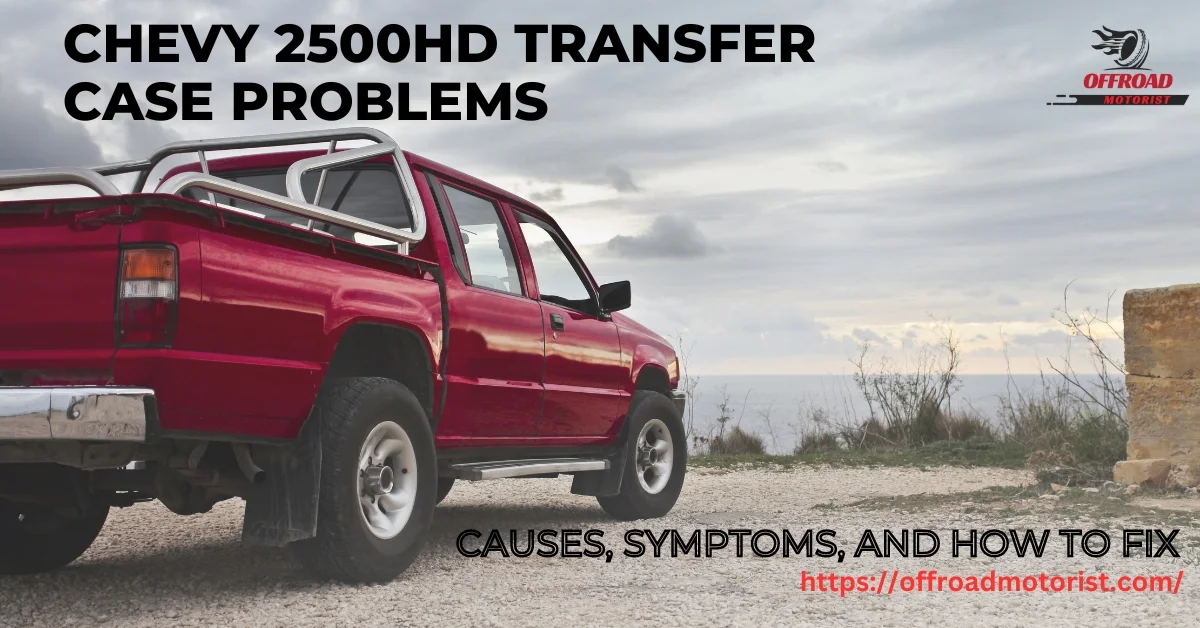Chevy Tahoe Won’t Start in Cold Weather [10 Common Reasons & How to Fix Them]
Few things are more frustrating than getting into your Chevy Tahoe on a cold winter morning, turning the key, and hearing nothing but silence.
From dead batteries to clogged fuel filters to malfunctioning engine control modules, we’ll cover everything you need to know to get your Tahoe running smoothly in cold weather. So, grab a cup of coffee, and let’s dive in!
Common reasons why your Tahoe won’t start in cold weather and how to fix them
There are several common reasons why your Tahoe may not start in cold weather, but each issue has a corresponding solution.
By identifying the symptoms and using the appropriate fixes, you can keep your Tahoe running smoothly and prevent starting issues in the future.
Here are the ten most common reasons why your Tahoe won’t start in cold weather and how to fix them.
Reason 01: Dead battery or weak battery
A dead or weak battery is the most common reason for a vehicle not starting in cold weather. When temperatures drop, the battery’s capacity decreases, making it harder to start the engine.
Symptoms:
- Slow cranking or no cranking at all
- Dim lights or flickering dashboard lights
- Clicking sound when turning the key
Solutions:
- Jump-start the battery with another vehicle or portable battery booster
- Replace the battery if it’s more than 4-5 years old
- Keep the battery charged and warm in cold weather using a battery blanket or trickle charger
Reason 02: Faulty starter
If your Tahoe’s battery is in good condition, but the engine still won’t crank, the starter motor may be faulty or worn out.
Symptoms:
- Grinding noise or whirring sound when turning the key
- No cranking at all, even with a good battery
Solutions:
- Replace the starter motor if it’s faulty or worn out
- Check the wiring and connections to the starter
- Test the ignition switch and solenoid to ensure they’re working properly
Reason 03: Clogged fuel filter
A clogged fuel filter can also cause starting issues in cold weather.
Symptoms:
- The engine cranks but doesn’t start or stalls shortly after starting
- Poor acceleration or reduced engine power
Solutions:
- Replace the fuel filter if it’s clogged or dirty
- Use a fuel system cleaner to remove deposits and debris from the fuel system
- Check the fuel pump and pressure regulator to ensure they’re functioning correctly
Reason 04: Dirty or worn spark plugs
Spark plugs play a crucial role in igniting the fuel in the engine, but they can become dirty, worn out, or damaged over time.
Symptoms:
- Rough idle or misfires
- Reduced fuel efficiency or power
Solutions:
- Replace the spark plugs if they’re dirty, worn out, or damaged
- Check the spark plug wires and ignition coil for damage or wear
- Use a fuel system cleaner to remove carbon deposits and improve combustion efficiency
Reason 05: Bad ignition switch
An ignition switch that’s faulty or damaged can also cause starting issues in cold weather.
Symptoms:
- No power to the dashboard or accessories when turning the key
- Inconsistent starting or intermittent starting issues
Solutions:
- Replace the ignition switch if it’s faulty or damaged
- Check the wiring and connections to the ignition switch
- Test the starter relay and fuse to ensure they’re working properly
Reason 06: Low fuel pressure
If your Tahoe is cranking but has yet to start, low fuel pressure may be the culprit
Symptoms:
- The engine cranks but doesn’t start or stalls shortly after starting
- Poor acceleration or reduced engine power
Solutions:
- Check the fuel pump and pressure regulator for damage or wear
- Replace the fuel pump or pressure regulator if necessary
- Use a fuel system cleaner to remove deposits and debris from the fuel system
Reason 07: Frozen fuel line
The fuel line can freeze in freezing weather, preventing fuel from reaching the engine.
Symptoms:
- The engine cranks but doesn’t start or stalls shortly after starting
- Poor acceleration or reduced engine power
Solutions:
- Use a fuel system antifreeze or fuel line heater to prevent freezing
- Warm up the engine and fuel system before attempting to start
- Keep the vehicle in a warm garage or shelter during cold weather
Reason 08: Faulty engine coolant temperature sensor
The engine coolant temperature sensor measures the engine’s temperature and sends a signal to the engine control module to adjust the fuel mixture and ignition timing.
If the sensor is faulty or damaged, it can cause starting issues in cold weather.
Symptoms:
- The engine cranks but doesn’t start or stalls shortly after starting
- Poor acceleration or reduced engine power
Solutions:
- Replace the engine coolant temperature sensor if it’s faulty or damaged
- Check the wiring and connections to the sensor
- Test the thermostat and heater core to ensure they’re functioning correctly
Reason 09: Incorrect oil viscosity
Using the wrong oil viscosity can also cause starting issues in cold weather. The too-thick or too-thin oil can prevent the engine from cranking or starting.
Symptoms:
- Slow cranking or no cranking at all
Solutions:
- Use oil with the correct viscosity for cold weather conditions
- Check the owner’s manual for the recommended oil viscosity
- Consider using synthetic oil, which is more resistant to cold weather
Reason 10: Malfunctioning engine control module (ECM)
The engine control module (ECM) is the brain of the vehicle’s engine management system. It can cause various starting issues, including misfires, stalls, and check engine lights if faulty or damaged.
Symptoms:
- Check engine light is on
- Engine misfires or stalls
Solutions:
- Replace the ECM if it’s faulty or damaged
- Check the wiring and connections to the ECM
- Test the sensors and actuators to ensure they’re functioning correctly
It’s essential to perform regular maintenance on your vehicle, especially during winter, to ensure that all components are in good condition and ready to handle the cold weather.
FAQs on Tahoe Won’t Start in Cold Weather
In addition to the common reasons and fixes for a Tahoe not starting in cold weather, we’ve also provided answers to some commonly asked questions.
These FAQs can help you understand why your Chevy Tahoe won’t start in cold weather and how to fix it.
How can I prevent my Tahoe from experiencing starting issues in cold weather?
To prevent starting issues in cold weather, you can take several steps, including:
- Keeping the battery charged and warm in cold weather using a battery blanket or trickle charger
- Using the recommended oil viscosity for cold weather conditions
- Keeping the fuel system clean and using a fuel system cleaner regularly
- Checking and replacing the spark plugs and air filter when necessary
- Parking your Tahoe in a warm garage or shelter during cold weather
- Performing regular maintenance on your vehicle
How often should I replace my spark plugs in a Tahoe?
Spark plugs should be replaced every 30,000 to 100,000 miles, depending on the type of spark plug and driving conditions. Refer to your owner’s manual for the recommended replacement interval for your specific Tahoe model.
Can I jump-start my Tahoe in cold weather?
You can jump-start your Tahoe in cold weather, but it’s essential to take extra precautions to ensure safety. Make sure both vehicles are turned off and connect the jumper cables in the correct order.
Start the functioning vehicle and let it run for a few minutes before attempting to start the dead car.
What is the average cost to fix a starter in a Tahoe?
Depending on the severity of the problem and the cost of parts and labor, the expense of repairing a Tahoe’s starter can vary. On average, the cost can range from $300 to $600.
Why does my Tahoe start in warm weather but not in cold weather?
Starting issues in cold weather are often caused by a weak battery, a faulty starter, or other problems that are more likely to occur in cold temperatures.
In warm weather, these issues may be less noticeable. Performing regular maintenance and taking steps to prepare your Tahoe for cold weather can help prevent starting issues.
Is it safe to drive a Tahoe with a faulty ECM?
Driving a vehicle with a faulty ECM is not recommended, as it can cause further damage to the engine and other components. Have your car inspected by a qualified mechanic to diagnose and fix the issue.
How can I check my Tahoe’s battery health?
You can check your Tahoe’s battery health using a battery tester or multimeter. You can also have your battery tested by a qualified mechanic.
What should I do if my fuel line is frozen in cold weather?
If the fuel line is severely frozen, it’s best to have it inspected and repaired by a qualified mechanic.
How can I tell if my engine coolant temperature sensor is faulty?
Symptoms of a faulty engine coolant temperature sensor include the engine cranking but not starting or stalling shortly after starting, poor acceleration, and reduced engine power.
You can have the sensor tested by a qualified mechanic or use a diagnostic tool to check for error codes.
Can I replace my Tahoe’s ECM myself?
Replacing an ECM can be a complex and technical task that requires specialized tools and knowledge.
It’s recommended to have the ECM replaced by a qualified mechanic or dealership to ensure proper installation and programming.
Final Words on Tahoe Won’t Start in Cold Weather
Starting issues in cold weather can be frustrating, but understanding why your Tahoe won’t start and how to fix them can keep your vehicle running smoothly in any weather condition.
Regular maintenance, such as keeping the battery charged and warm, using the correct oil viscosity, and keeping the fuel system clean, can help prevent starting issues.
By taking care of your Tahoe and addressing issues promptly, you can ensure safe and reliable driving in any weather condition.


![Why Your Chevy Tahoe Cranks but Wont Start [Solving the Mystery] chevy tahoe cranks but wont start](https://offroadmotorist.com/wp-content/uploads/2023/02/chevy-tahoe-cranks-but-wont-start-150x150.jpg)
![Revitalize Your Chevy's Power “Service Battery Charging System” [Problem Solved] Service Battery Charging System](https://offroadmotorist.com/wp-content/uploads/2023/01/Service-Battery-Charging-System-150x150.jpg)

![Mysterious Shutdowns: Chevy Silverado Shuts Off While Driving and Won't Start [Issue Fixed] Chevy Silverado Shuts Off While Driving and Won't Start](https://offroadmotorist.com/wp-content/uploads/2023/02/chevy-silverado-shuts-off-while-driving-150x150.jpg)






